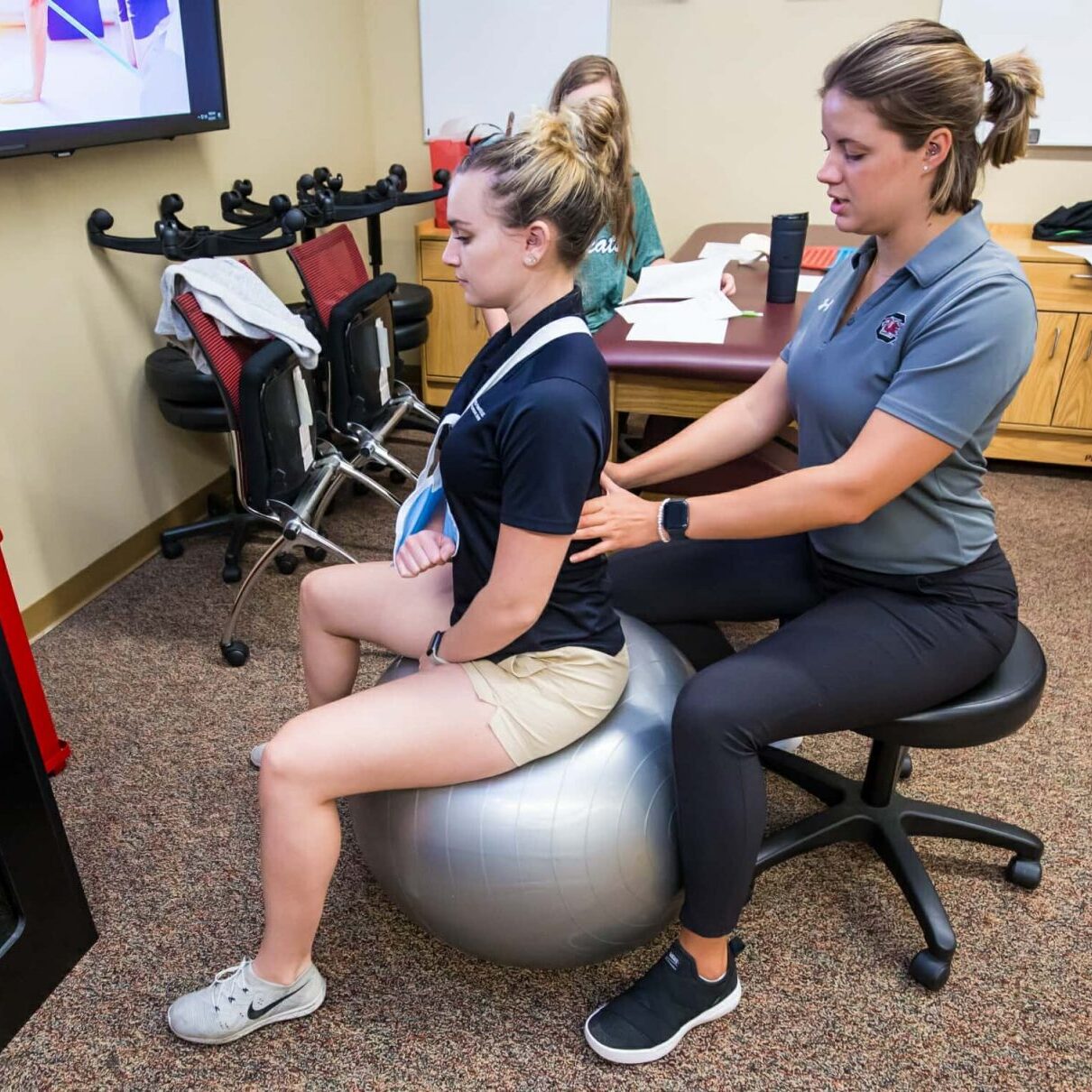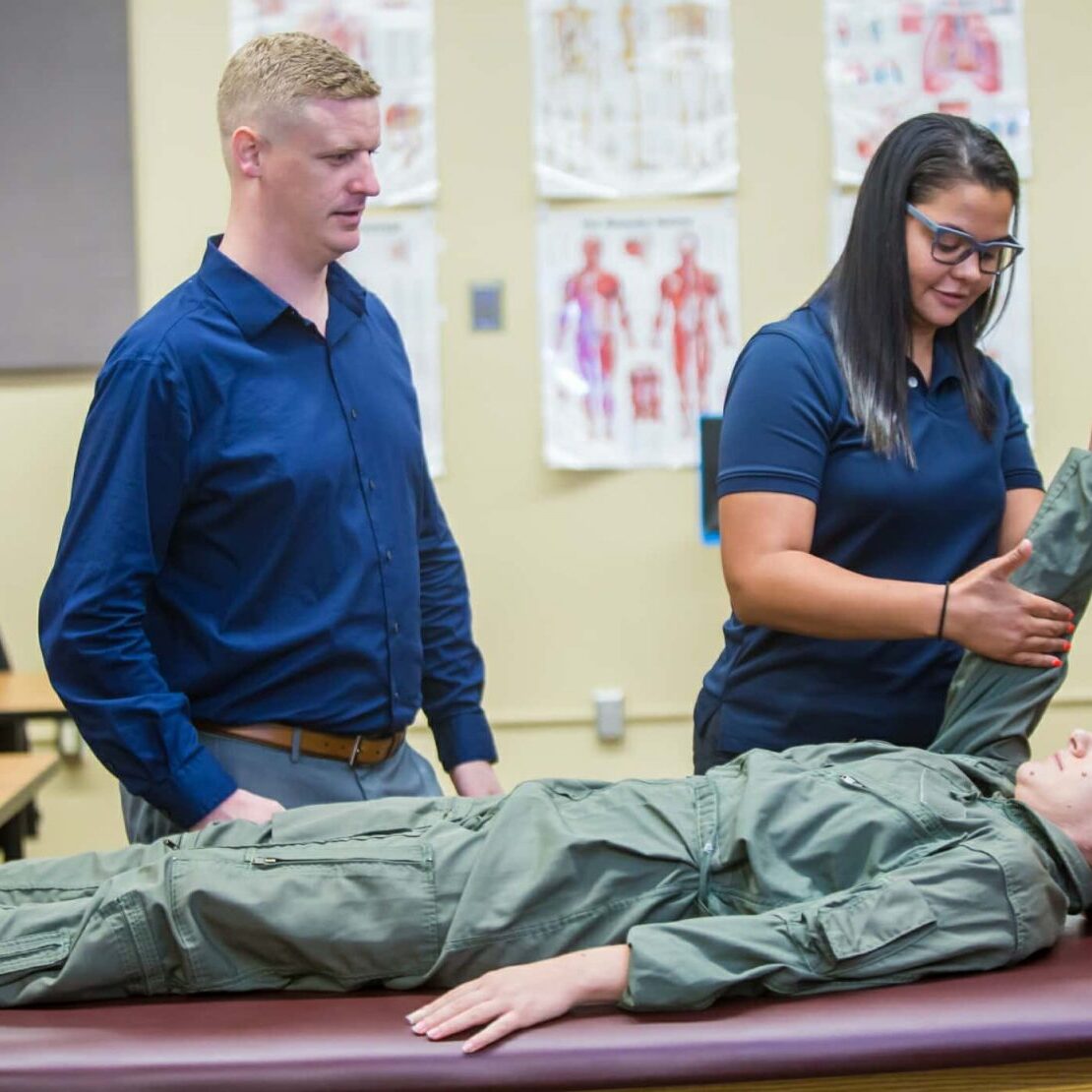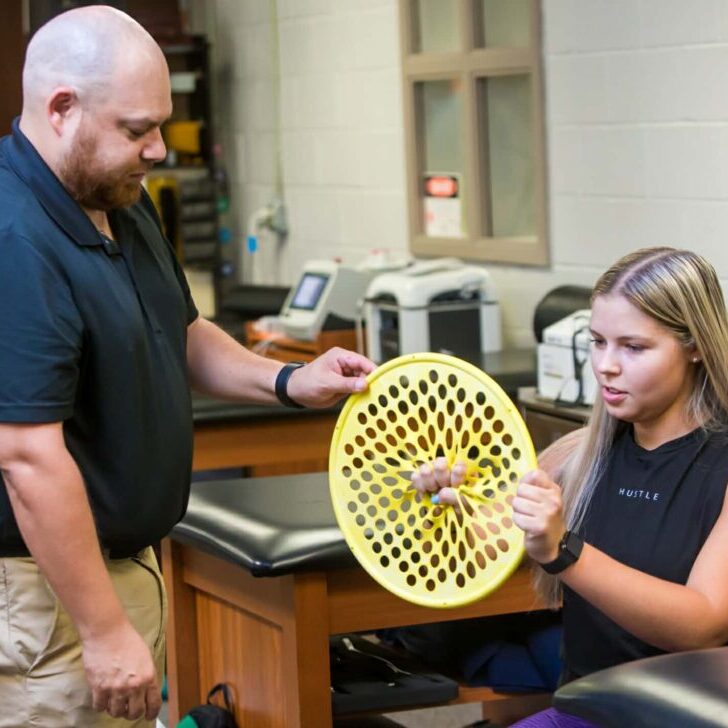Where should you begin?
Learn about the career field, the growing opportunities, and what a day in the life of an AT is like.
Find the right educational path for you, review both our recommendations and the requirements, and think about how you will fund your education.
First, be certain about which program(s) you want to apply to. Then, review the exact requirements for each, since every program may have a different process and different needs. Should you need support in applying, we're here for you!
Get familiar with what you will do when completing your degree, as well as the various paths available to you in your future as an athletic trainer.
Take the next steps in your career as an Athletic Trainer, including taking the BOC exam and obtaining state license/credentials.

Becoming an Athletic Trainer
Athletic Training is a dynamic and exciting healthcare career that suits those with a passion for healthcare and sport. The U.S. Bureau of Labor Statistics predicts that employment for Athletic Trainers will grow by 16% — much faster than average — between 2022 and 2032.
Athletic Trainers (AT) don’t just care for high performing athletes in organized sports, either. You'll have the opportunity to work with members of the military, performing artists, recreational athletes, and anyone in physically-demanding jobs. If you want to work with athletes specifically, there are opportunities with colleges and universities, professional sports teams, secondary schools and other organizations.
Athletic Trainers (ATs) are critical to the sports medicine healthcare team as they mitigate risk and promote wellness through prevention strategies, examine and diagnose patients, develop rehabilitation plans, and help patients improve their overall wellbeing. ATs provide immediate care on the field, ranging from first-aid for blisters to life-saving defibrillation. They provide rehabilitation to help their patients get back to their active lives, whether on the field, in the factory, or on their daily runs. With their whole-person approach to healthcare and wellness, ATs provide care for health conditions that affect all parts of a person - whether it’s screening for strep throat or identifying those in need of a mental health referral.
Depending on your focus, you may be working in a medical office on weekdays or traveling with teams on weekends. The possibilities are almost endless, and the path you follow is up to you.
Getting into AT School: Finding the Right Fit
Whether you’re coming to athletic training later in life or directly out of high school, there’s an option for you. Completion of a CAATE-accredited professional program is the first step to becoming an athletic trainer. To be an athletic trainer, you will need a master’s degree in athletic training.
Once you identify the educational path that works for you, it’s time to think about where to apply. Find the schools that meet your criteria based on program type, cost, location, and reputation. (Hint: Our global program map can help you in that research process.)
Finally, if you need advice or support while applying, you can reach out to us for answers to any questions. Our open houses and virtual events can also help you determine which school is right for you.


Getting into AT School: The Application Process
With your selected schools in mind, check the application requirements for each. Some institutions require applicants to use the Athletic Training Centralized Application System (ATCAS) to apply, while others use their institution-specific system. Application requirements differ program by program, so this is why we suggest you research each program completely.
Take prerequisite courses needed for your application. Complete any required observation hours. Think about who might write your letters of recommendation and ask them. Consider taking the GRE, as this is a program requirement at some institutions. Start preparing your personal essay and brushing up on your interview skills.
Going to AT School
Your time in school will consist of clinical and classroom education – both equally as important. This is where you will gain the knowledge base and initial skills to become the best athletic trainer that you can be.
In addition to your application, you need to prepare your finances. We'll share how you might cover tuition and living expenses during your studies, what to consider regarding working while pursuing your degree, and the loan, fee waiver, scholarship, and grant opportunities available.


What’s After AT School
Completing a professional program is step one to becoming eligible to practice as an athletic trainer. Next, pass the BOC (The Board of Certification) exam and obtain your state credential. You’ll be eligible for the BOC exam in your final term of enrollment, but you can choose to wait until after you graduate. We'll explain each of these further, but remember that they are going to be required to practice.
The BOC exam is a single-day exam designed to assess all domains of practice: injury and illness prevention and wellness promotion; immediate and emergency care; examination, assessment, and diagnosis; therapeutic interventions; and healthcare administration and professional responsibility. Passing the exam is needed to apply for a state credential.
Once you're certified and have your state credential, you can get a job as an Athletic Trainer (AT). That's not the end of your journey, however. As an AT, you'll participate in continuing education to keep your knowledge and skills current. Plus, you will have opportunities to pursue additional education and experiential opportunities like advanced degrees, residencies and fellowships.
